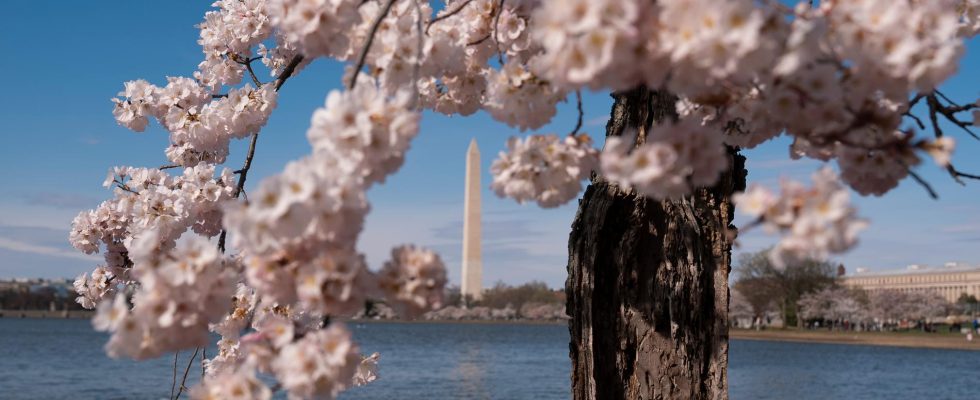unsaveSave
Social media phenomenon Stumpy, a cherry tree, in the US capital Washington DC.
1 / 4Photo: Andrew Harnik/AP/TT
The old gnarled Stumpy cherry tree in Washington DC has been the subject of countless photographs. But anyone who wants to catch a glimpse of the social media phenomenon will have to hurry.
Soon, Stumpy and close to 140 other cherry trees at the Tidal Basin reservoir will be felled.
Stumpy, whose name could be translated as stumpy, became a star on social media during the pandemic year of 2020. Since then, the cherry tree has gained a large fan base and adorns everything from sweaters to calendars.
The sadness was therefore great when the news came that this year’s bloom will be the last for Stumpy and nearly 140 other cherry trees at the reservoir in the American capital.
The area needs to be renovated, as it is now flooded daily by the waters of the Potomac River due to rising sea levels. Starting in early summer, work will therefore begin to replace the crumbling dike around the reservoir.
Benefits the cherry trees
The floods do not only affect the walkways in the dam park. The brackish water also soaks several of the cherry trees’ roots, damaging them. The rebuilding project is estimated to take three years and cost the equivalent of SEK 1.4 billion, according to Mike Littest, who is a spokesperson for the park.
– It will really improve the visitors’ experience, he asserts.
– But above all, it will benefit the cherry trees, which currently have their roots flooded twice a day.
To be cloned
Stumpy still stands relatively steady across from the Washington Monument. But several other cherry trees have died because of the floods. They will not be able to be replaced until the rebuilding work is finished, Littest underlines. But eventually 277 new cherry trees will be planted on the site.
There is also a glimmer of light in the sadness over the fate of local celebrity Stumpy. Tree care specialists plan to create clones of the tree and some of them will eventually be replanted at the reservoir.
Rising sea levels are not the only climate phenomenon affecting the trees of Washington DC. The increase in temperature in recent years means that the total of thousands of cherry trees bloom earlier with each passing year.
This year, the flowers bloomed on March 17, several days earlier than expected.
